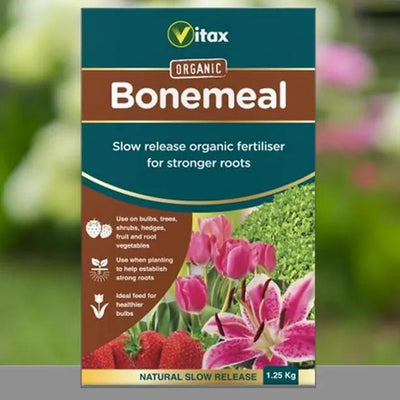Laxtons Superb Apple Trees
The late Victorians and Edwardians loved this apple. Laxtons Superb graced many tables because of its tremendous sweetness, complex flavours and firm but not too juicy flesh. Needless to say it's a superb apple. Less flat than a Cox's Orange Pippin from which it's derived, it's definitely sweeter and larger than a Cox but not so brash in taste as modern varieties of apple. The apples are of a medium size with slight russeting on the red flushed surfaces of the greeny/yellow skin. It's handsome without being hugely decorative. The flesh is cream in colour and fine in texture. The blossom comes early in May.
Browse our range of apple trees or see the full variety of fruit trees.
Growing Guide
The hidden ingredient in the Laxtons Superb flavour is its ancestry in the Wyken Pippin apple, an old variety that is rarely grown today. Weirdly it tastes better if you cut it and eat it in slices rather than bite into it....try it and see! It needs a pollinator to help deliver its full potential. If you do not have a preference, we recommend Worcester Pearmain which is another fascinating older dessert apple. It fruits earlier than Laxtons Superb, but flowers at the same time and would do the job perfectly. Any Group C or D apples would suit. Not a showy apple tree, it would look wonderful clothed in a rambling rose in the summer season.
Features
- Height: Bushes to 3m, half standards to 4.5m
- Taste: Wonderful sweet eating apple. Cut it, don't bite it....
- Pruning: Spur bearer
- Pollination: Partially self-fertile
- Picking: October - January
- Apple colour: green / red
- Pollination Group: Group D
History & Trivia
Introduced in 1897 in Bedfordshire by the Laxton Brothers, well known apple breeders of the time, this apple has remained popular ever since. Their father Thomas Laxton was a well-known plant breeder specialising in strawberries and peas. He worked with Charles Darwin on some of his pea experiments and is mentioned in Darwin's 'The Variation of Animals and Plants Under Domestication' and in other publications.








 Secure, One-Tap Checkout
Secure, One-Tap Checkout
 Hand Picked, Delivered to Your Door!
Hand Picked, Delivered to Your Door! 1 Year Bareroot Guarantee
1 Year Bareroot Guarantee















